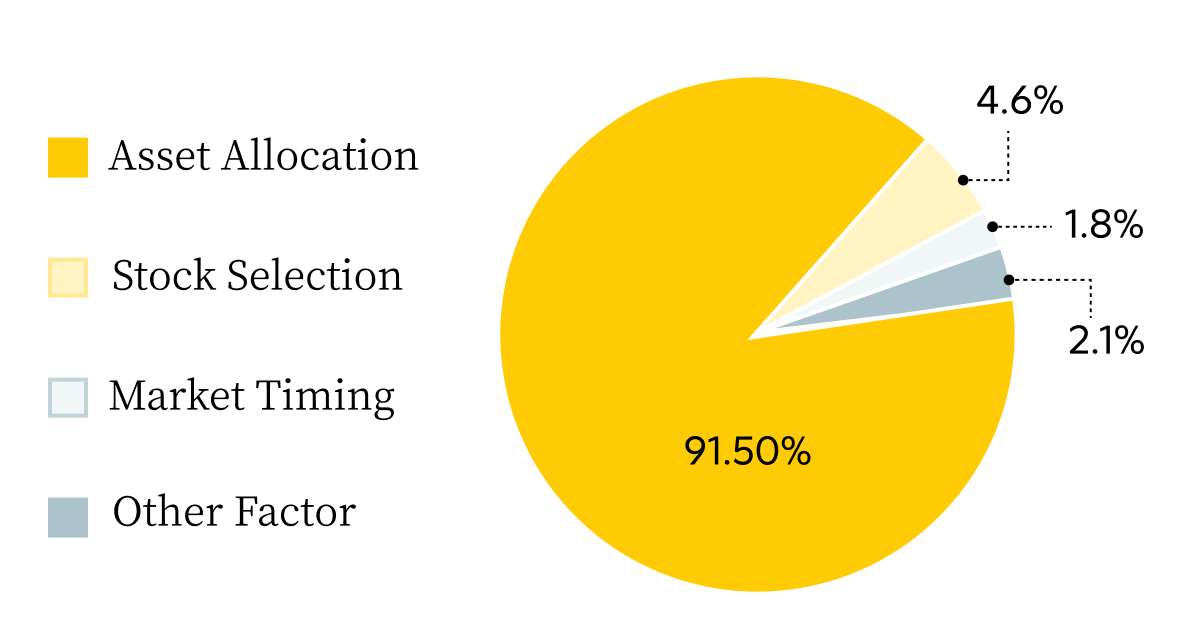Back to Blog
Asset Allocation and Diversified Investment Strategies: Building a Robust MPF Portfolio
Your MPF is one of the most important foundations for your retirement. How you manage and optimize your investment portfolio may impact the quality of your retirement life. Therefore, it is crucial to actively manage and regularly review your MPF investment strategy.
Asset Allocation: The Key to Maximizing Investment Returns
A study published in the “Financial Analysts Journal” revealed that asset allocation influences over 90% of long-term investment returns, far outweighing the impact of individual security selection or market timing. In other words, effective asset allocation may significantly boost your investment results and may help to ensure your retirement savings grow more securely.
Key Drivers of Investment Performance

Source: Brinson, Gary P., L. Randolph Hood, and Gilbert L. Beebower, 1986. "Determinants of Portfolio Performance." *Financial Analysts Journal* 42(4): 39–48; reprinted 1995 in *Financial Analysts Journal* 51(1): 133–38 (50th Anniversary Issue).
Building a Stable Asset Allocation Strategy: Diversification to Manage Risk
The saying, "Don’t put all your eggs in one basket," aptly highlights the importance of asset allocation. A well-balanced investment strategy should include a mix of asset classes such as stocks, bonds, and money market instruments, while also diversifying across different regions. This approach helps reduce risk because if one asset class or market underperforms, the returns from other assets can help offset the losses, stabilizing your overall portfolio.
Asset allocation should also be tailored to your personal risk tolerance and investment timeline. Younger investors, with a longer investment horizon, may consider a higher allocation in equity funds for greater growth potential. On the other hand, those nearing retirement should gradually shift towards more conservative bond or money market funds to minimize the impact of market volatility.
Dollar-Cost Averaging: The Long-Term Investment Strategy
MPF investments often use the Dollar-Cost Averaging method, which helps mitigate the impact of market fluctuations on your portfolio. Regardless of the market's highs and lows, you invest a fixed amount each month:
- When the unit price is high, your fixed amount buys fewer units.
- When the unit price is low, your fixed amount buys more units.
This strategy smooths out the effects of short-term market volatility and helps lower the average cost of your investment over time, leading to more consistent returns. However, the key to success with Dollar-Cost Averaging is "patience." Investors must resist the urge to make frequent adjustments based on short-term market movements and stay focused on their long-term objectives.
MPF is a long-term investment, and market fluctuations are inevitable. To ensure steady growth in your retirement savings, a robust asset allocation strategy, coupled with diversification to manage risk and a disciplined approach using Dollar-Cost Averaging, is essential. By regularly reviewing your investment portfolio and adjusting your asset allocation according to different life stages, you can confidently work toward a secure and fulfilling retirement.
Disclaimer: The information, data, and documents provided on this website are for general reference purposes only and should be used as self-help tools. Investment involves risks, and unit prices may fluctuate. Past performance figures shown are not indicative of future performance. BestServe Financial Limited and its content providers are not responsible for any loss or damage caused by reliance on any information or advice made in this website.







